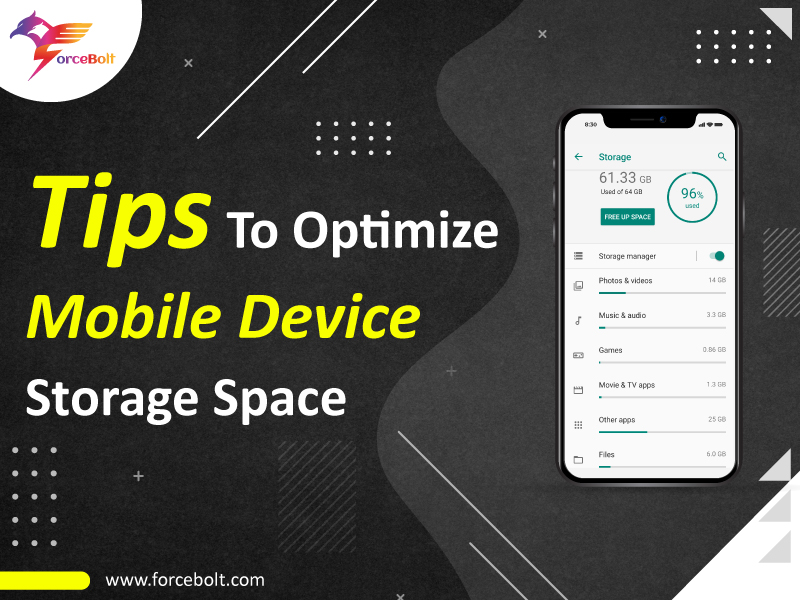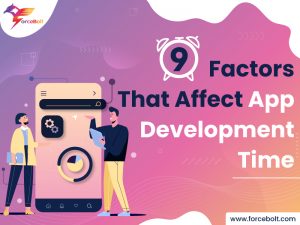Sharing is caring!
There is no denying the absolute fact that smartphones are full of data, and most of them are running out of storage spaces. In that case, the only one-stop solution left is to either wipe the data or get a new device with more storage space.
It’s no wonder for your phone to run out of storage space as the storage space is occupied with high-resolution photos and videos and video-streaming services, taking up more storage space for a very long time ago.
A recent survey shows that 50% of respondents are running out of space on their smartphones, and 21% of them are running out of space, which clearly defines that 71% of respondents need more storage space.
Nearly a decade ago, it was easy to get more storage space with a microSD card, as most smartphones at the time supported microSD cards. However, except for brands like Samsung Galaxy, most manufacturers no longer offer this option. So the question here arises: what to do if there is no more space on your mobile device? Let’s find out below.
1. Opt For The Most Demanding Cloud Storage Service
One of the easiest ways to get more free space on your mobile device is to choose a cloud storage service like Dropbox, Google Drive, iCloud Drive, and others. Regardless of whether you choose a free or paid cloud storage service, you can configure settings for uploading photos and videos to the cloud, thereby freeing up storage space on your smartphone.
Undoubtedly, the storage service application must support automatic backup or upload photos and videos to cloud storage. For example, by using Google Photos, you can back up and sync your photos and videos. You can also delete them after they are uploaded to the cloud to free up more space.
2. Clear Device Memory
In today’s digital age, every device gets overloaded with time, especially our smartphones. That’s why you should do regular spring cleaning, i.e., at least every three months, if not every month. You can do this manually as there are a bunch of mobile apps out there to help you clean up your device, categorizing the space used by apps, documents, media, and more.
Most importantly, the app lists cache, junk files, and temporary data so you can save space with just a few clicks. For example, you can use files from Google to browse files and clean your phone. You need to review photos and videos and delete corrupt, duplicate, pixelated, or unwanted media files to free up space. You also need to check the Downloads folder on your device as we tend to download files that can be messy at times and can also delete them all at once.
3. Delete Unused Mobile Apps
As per a recent report, the average smartphone user typically has more than 80 apps installed on their mobile device. However, the average person only uses nine apps per day and 30 apps per month, which means you can eliminate your unused apps from your device to free up storage space. On Android, you can use the Google Play Store to check all installed apps and remove the ones you don’t use.
4. Clear Apps’ Cache And Temp
Each app loads and stores data locally on your device. For example, Facebook may store login information and some cached or temporary media files. Similarly, Amazon Prime, Castbox.FM, Netflix, and most other media apps let you download media offline using device storage.
Some of this data is stored in special repositories, categorized as “cache,” while others are stored directly on the device. You can clear this additional or temporary cache and data to free up space on your smartphone.
5. Limit Media File Size
With the increasing use of smartphones to take photos and videos, it’s no wonder that storage space is mainly used for media files. Today’s flagship smartphones come with powerful megapixel cameras – over 100 MP. However, while that will give you a clear photo, it will also increase its size.
Likewise, advanced features like 4K resolution, HDR mode, and 60 frames per second option caught the attention of fans, but all this adds to the size of the media.
However, you will need to configure the camera app to reduce this setting. You can get decent photos and videos at 1080p resolution, 30 frames per second mode, and high compression rates, and you can always change the settings for special occasions.
Final Wrap
If your Android phone (or any other Android device) is running low due to insufficient storage space, you can perform the above-mentioned space optimization processes from time to time to optimize mobile device storage space and keep your device and apps running smoothly.
Are you looking to hire a trusted Node.js development company? Then, you’ve landed in the right place. Our creative mobile app developers can create top-class apps for various platforms such as iOS, Android, and cross-platform solutions in Flutter and React Native. Known as the best react native app development company, we have deep expertise in developing cost-effective and robust mobile app development solutions to meet your ever-evolving business requirements.

Kishor Kumar
Full Stack Technical Lead
A well-versed Senior Full Stack Developer who has the expertise of providing front-end and back-end development services. He is an effective and efficient personnel who knows how to make the right technical decisions at the right time. He understands the basics of working collaboratively with stakeholders, engineers, executives, and end-users to bring the ideas to life. He is a top-performer and motivator who has the added advantage of technology as leverage to achieve timely results.













